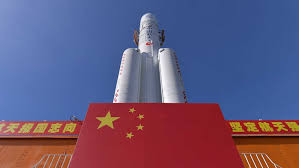
IN large parts of Africa, including Zimbabwe, maize is the main source of livelihood for smallholder farmers because it is a staple and cash crop.
However, with the imminent threat of an El Nino-induced drought, the dependence on cereal crops such as maize as the main source of livelihoods for smallholder farmers is threatening food security and livelihoods as production is directly linked to the availability of rain.
Through the International Livestock Research Institute (ILRI), a programme called Ukama Ustawi initiative is empowering smallholder farmers in Zimbabwe to intensify, diversify and de-risk maize-mixed farming through rotation and/or intercropping maize with forage legumes that are used to formulate livestock feeds.
“We are introducing ways of feeding livestock using forage legumes, maize grain and stover produced from the maize-based farming system. The goal is for the farmer to either sustain his livestock through the dry season thus creating resilience to the drought or even for sale to generate income”, ILRI forage scientist Godfrey Manyawu said.
These technologies empower farmers to add value to maize seed by using it as a stockfeed ingredient, instead of selling it for smaller profits.
In this system, residues from the legumes such as Velvet bean, groundnut hulms and lablab are used to form rations incorporating maize grain and fed to livestock during the dry season which normally extends from June up to December.
This intensification of maize-based mixed-farming systems and subsequent feed formulation has proved a reliable climate change risk mitigation strategy for farmers like William Nyamusanduka from Madziva, Mashonaland Central province who breeds Boer goats.
“I started rearing goats in 2022, but due to lack of adequate feed, my goats were not increasing in numbers,” Nyamusanduka said.
- Mavhunga puts DeMbare into Chibuku quarterfinals
- Bulls to charge into Zimbabwe gold stocks
- Ndiraya concerned as goals dry up
- Letters: How solar power is transforming African farms
Keep Reading
“However, when I joined the Ukama Ustawi initiative, I was equipped with knowledge on growing forage legumes and how to mix them with maize to produce livestock feed.
“I now find goat rearing less difficult because of the knowledge I have on good animal husbandry practices.”
Eronika Chikuruwo from Murehwa, Mashonaland East province, who recently sold her steer following a weight gain of 32 kilogrammes in one month after feeding with maize and forage legumes, said she now understands the importance of value addition in maize-based mixed farming systems.
She added that before joining the Ukama Ustawi Initiative, she would sell all her maize harvest and, later in the dry season livestock as a mitigatory measure against poverty deaths.











